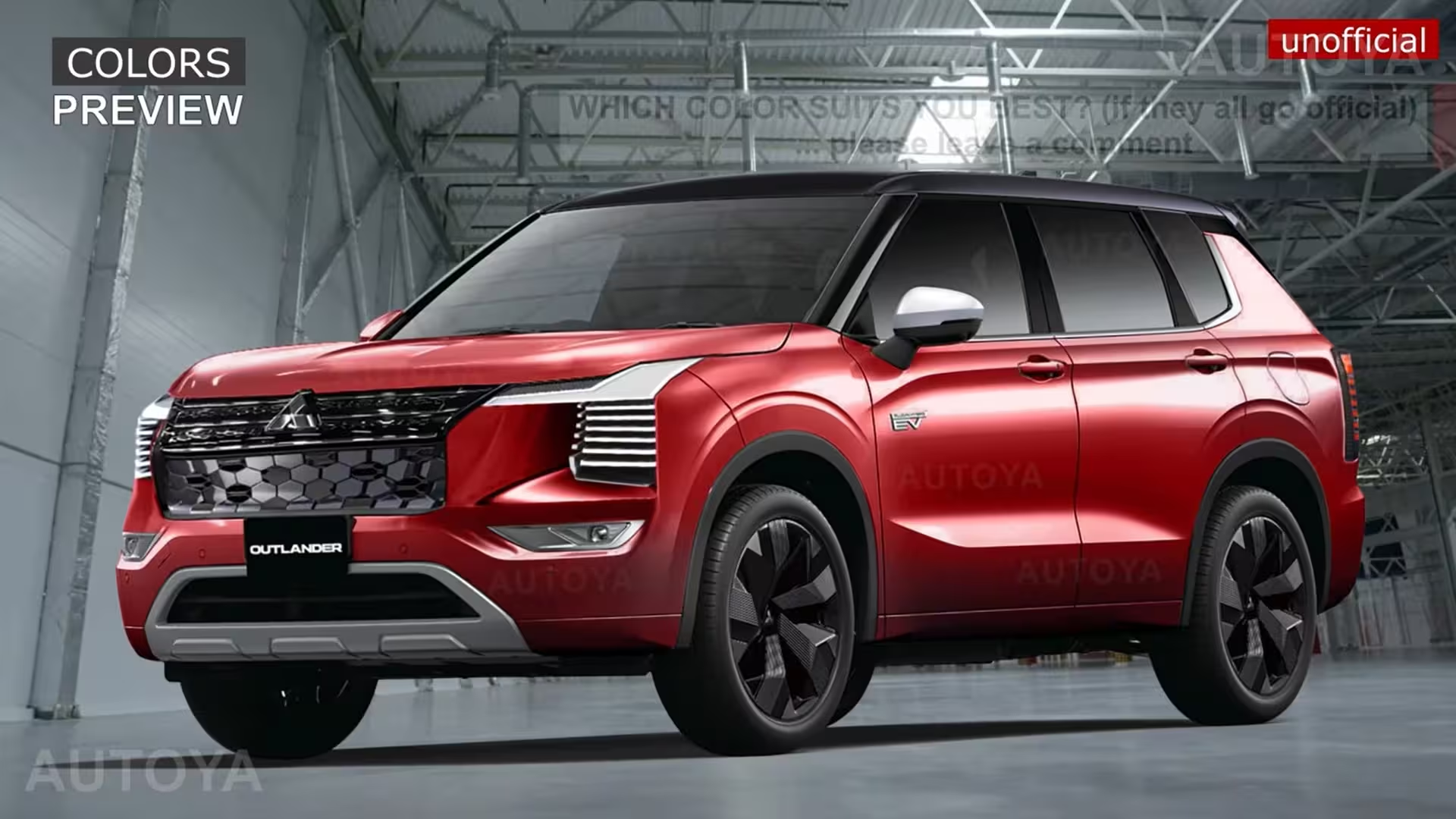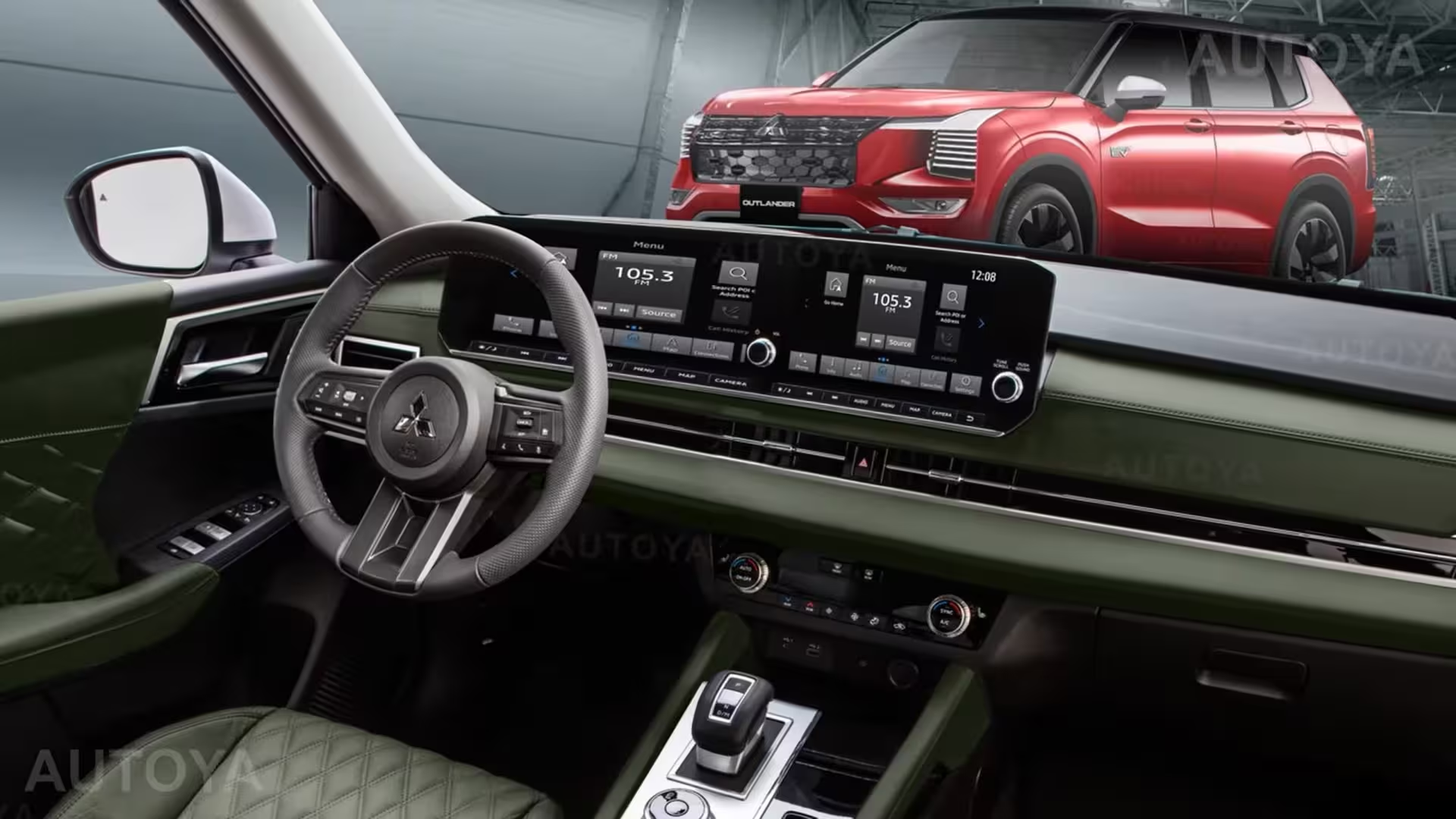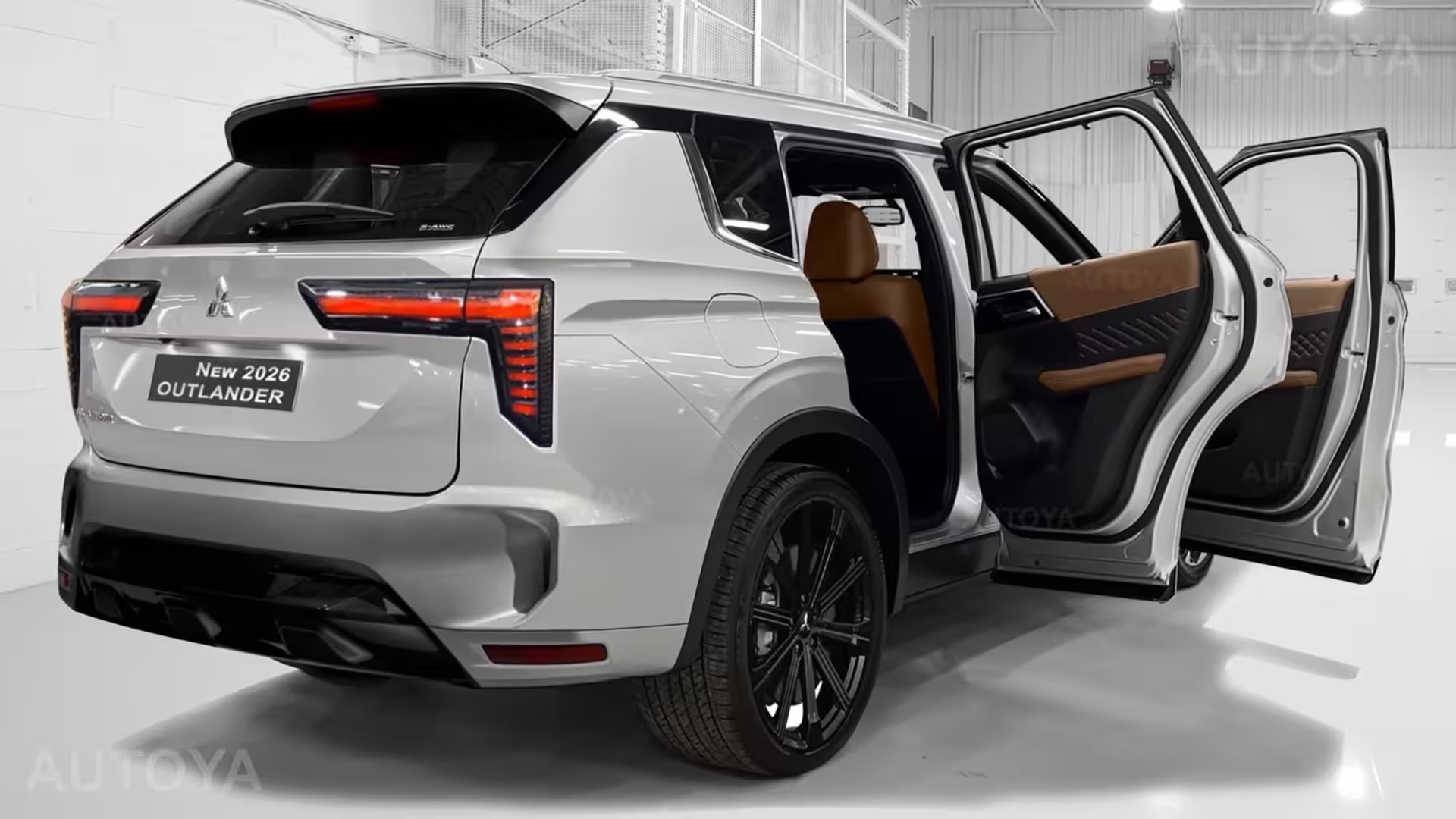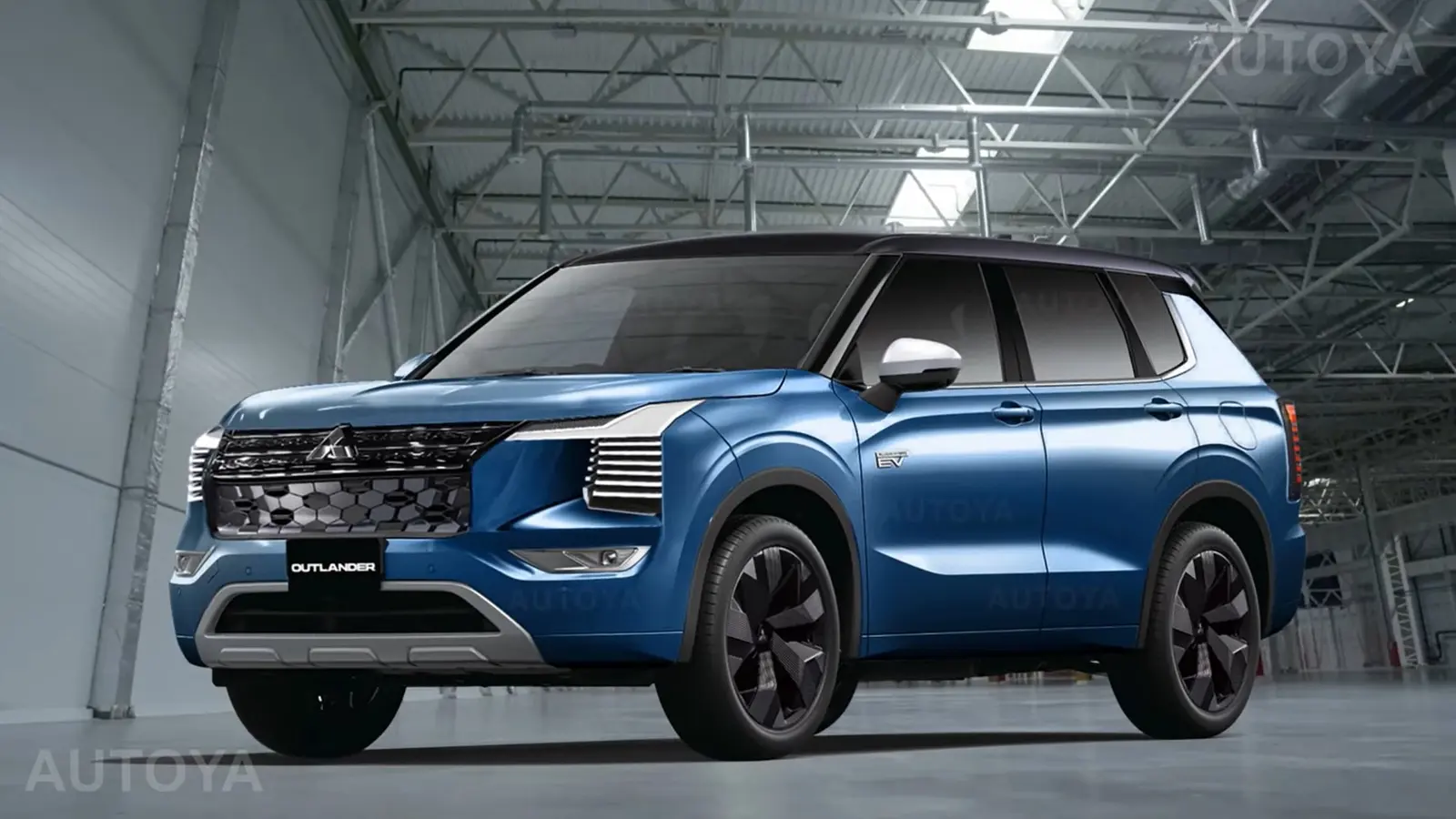6 Minutes
Mitsubishi Motors North America posted a modest 5% rise in U.S. deliveries for the first half of 2025, but the absolute figure — 53,753 units — underlines how far the brand has to go to regain market momentum. With the Outlander Sport aging and the Eclipse Cross failing to connect with broad mainstream tastes, Mitsubishi is relying heavily on the fourth-generation Outlander and its Plug-In Hybrid (PHEV) variant to carry the brand. Recent updates for 2025 and announced changes for 2026 were incremental but important; now, digital artists have imagined a bolder 2027 facelift in CGI that refreshes the Outlander inside and out.
Why Mitsubishi Needs the Outlander to Succeed
Mitsubishi’s lineup is thin. The Outlander and Outlander PHEV are the volume and halo models in many markets, so any meaningful sales recovery depends on these crossovers. The 2025 model year introduced subtle but valuable upgrades — improved sound insulation, higher-grade cabin materials, revised controls and a new infotainment interface — along with the more rugged 2025 Outlander Trail Edition. For 2026 Mitsubishi announced powertrain revisions: a new in-house 1.5-liter turbocharged engine replacing the carried-over 2.5-liter naturally aspirated unit, and the brand’s first mild-hybrid system shared with the Eclipse Cross. The Outlander PHEV inherits 2025’s interior updates (including Yamaha audio and a 12.3-inch touchscreen), but many customers and brand-watchers still expect more substantive design evolution.
CGI Vision: What AutoYa Imagined for the 2027 Outlander PHEV
The AutoYa YouTube channel collaborated with a virtual artist to produce unofficial CGI renderings of what a proper 2027 Mitsubishi Outlander PHEV facelift could look like. Unlike the subtle production changes we’ve seen, this concept envisions a broader refresh.

Exterior Styling
The CGI Outlander shows a simplified, two-tier front grille and a softer, more refined fascia. Headlights are reshaped with new LED daytime running light signatures that echo a lower grille motif. The profile remains largely familiar, preserving the Outlander’s upright SUV stance, but new dark-finish alloy wheels and a dual-tone roof treatment (black roof and pillars) give it a more premium, contemporary look. At the rear, the CGI introduces boomerang-shaped LED taillights mirroring the front’s lower motif, a design touch meant to improve visual cohesion across the vehicle.
Interior Redesign
On the inside, the imaginary 2027 PHEV gets a clean, modern overhaul. A new three-spoke steering wheel with traditional spoke-mounted controls replaces the current layout. The instrument area is a combined digital cluster integrated with the central infotainment screen for a seamless driver experience. Climate controls remain logically placed and user-friendly, while a wider palette of interior color schemes is offered to allow buyers to personalize cabin trim to match or contrast exterior finishes. Yamaha-branded audio and the 12.3-inch infotainment display remain key tech highlights.
Specifications and Powertrain
Although the CGI concept is purely visual, it offers a good prompt to recap what’s known about the Outlander PHEV’s mechanicals and what could be expected from future updates.

Known 2025–2026 Mechanical Changes
- 2025: Interior upgrades, new infotainment, improved NVH, and higher-quality materials across the range.
- 2026: Introduction of an in-house 1.5-liter turbocharged engine for the regular Outlander and Eclipse Cross, elimination of the older 2.5-liter naturally aspirated engine, and Mitsubishi’s first mild-hybrid system for select models.
PHEV Specifics
The Outlander Plug-In Hybrid pairs a gasoline engine with an electric drive system and battery pack for all-electric range and hybrid flexibility. Production PHEV powertrains focus on a balance between electric-only capability and long-distance driving efficiency. Any hypothetical 2027 changes could include software-driven efficiency improvements, minor battery upgrades, and further integration with Mitsubishi’s hybrid systems — though the CGI exercise focuses on styling rather than drivetrain changes.

Performance and Efficiency
Performance for the PHEV model will continue to be defined by electric motor torque delivery and battery capacity rather than raw internal-combustion output. The 1.5-liter turbo for the conventional Outlander suggests Mitsubishi is betting on downsized forced-induction engines to improve fuel economy and reduce emissions when combined with mild-hybrid technology. For the PHEV, expect emphasis on improved electric range, faster charging calibration, and smoother transition between electric and hybrid modes—areas where Mitsubishi can compete with other plug-in hybrid SUVs.
Market Positioning and Competitors
Mitsubishi positions the Outlander PHEV as a practical, family-friendly plug-in hybrid SUV that prioritizes usability, AWD versatility, and affordable electrified driving. The segment is crowded: rivals include the Toyota RAV4 Prime, Ford Escape PHEV (market-dependent), Hyundai Santa Fe and Tucson PHEV variants, and plug-in options from other mainstream brands. Mitsubishi’s challenge is distinguishing the Outlander PHEV with unique features such as standard AWD systems, competitive electric range, and the brand’s reputation for ruggedness in select trim levels like the Trail Edition.
Comparisons and What Fans Want
Compared to competitors, Mitsubishi’s strengths lie in straightforward pricing and off-road-capable trim options. Critics and enthusiasts want a clearer identity for the Outlander: bolder exterior design, a more upscale cabin to match newer rivals, and tangible improvements in electric range and onboard tech. The CGI facelift ticks some of those boxes visually, but the real test will be whether Mitsubishi can deliver similar upgrades in production — from materials and infotainment to powertrain efficiency.
Final Thoughts — Yay or Nay?
The AutoYa CGI concept for a 2027 Mitsubishi Outlander PHEV presents an attractive, cohesive facelift: cleaner front and rear lighting signatures, a refined cabin with modern digital integration, and a dual-tone aesthetic that lifts the model’s perceived value. Whether Mitsubishi adopts any of these cues in future production facelifts remains to be seen. For buyers and brand followers, the CGI exercise highlights potential routes for the Outlander to regain momentum in the competitive plug-in hybrid SUV market.
If Mitsubishi can combine the imagined styling improvements with continued updates to powertrain efficiency and PHEV range, the Outlander PHEV could be better positioned to win back buyers and strengthen MMNA’s sales performance beyond the current numbers.
Source: autoevolution


Leave a Comment